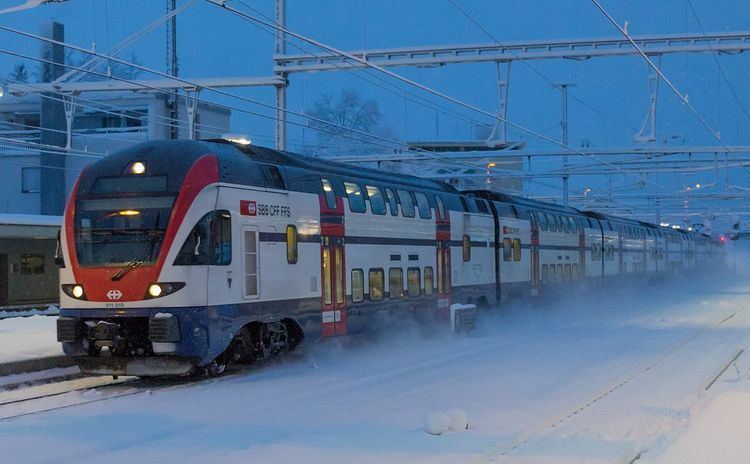In service 2011– Constructed 2008– Formation Up to 6 cars per train | Entered service 2011 Fleet numbers RABe 511 | |
 | ||
The Stadler KISS is a bilevel electric multiple unit commuter train developed by Stadler Rail of Switzerland. It is operated by the Swiss Federal Railways under the classification RABe 511, as well as by other European railways. In the early stages of development it was known as the Stadler DOSTO.
Contents
As of 2016, 242 KISS trainsets comprising 1,145 cars have been sold to operators in nine countries.
Name
The original name, "DOSTO", is derived from the German word Doppelstock, meaning "double decker". Since September 2010, Stadler refers to the train as "KISS", an acronym for komfortabler innovativer spurtstarker S-Bahn-Zug, meaning "comfortable, innovative, sprint-capable suburban train".
The trains's power plant is capable of delivering brief bursts (several minutes) of "sprint" power, over 6,000 kilowatts, enabling it to overtake other trains on short express tracks.
Features
The KISS vehicles are the third generation of vehicles for the S-Bahn Zürich. Compared to previous generations, they are characterized mainly by a higher number of standing passengers per car, in part because the longer trains have proportionately fewer cabs. Also, 15 cm width was won by placing the HVAC channels under the ceiling instead of the side panel. The headroom is still two meters, because friction stir welded floor panels made from aluminium extrusions are used. The number of seats, however, is slightly lower than in the previous models. Like in the KISS's predecessors, low-floor entrances, vehicle air conditioning and vacuum toilets (two, including one wheelchair accessible) are available. There are also two multi-functional areas with storage space for strollers, bicycles and the like.
The six-car train set consists of two power cars and four trailers. In the power heads, all axles are powered. "Eurasia" (version for the Russian gauge railways, as six and four-car formation) has no power heads.
